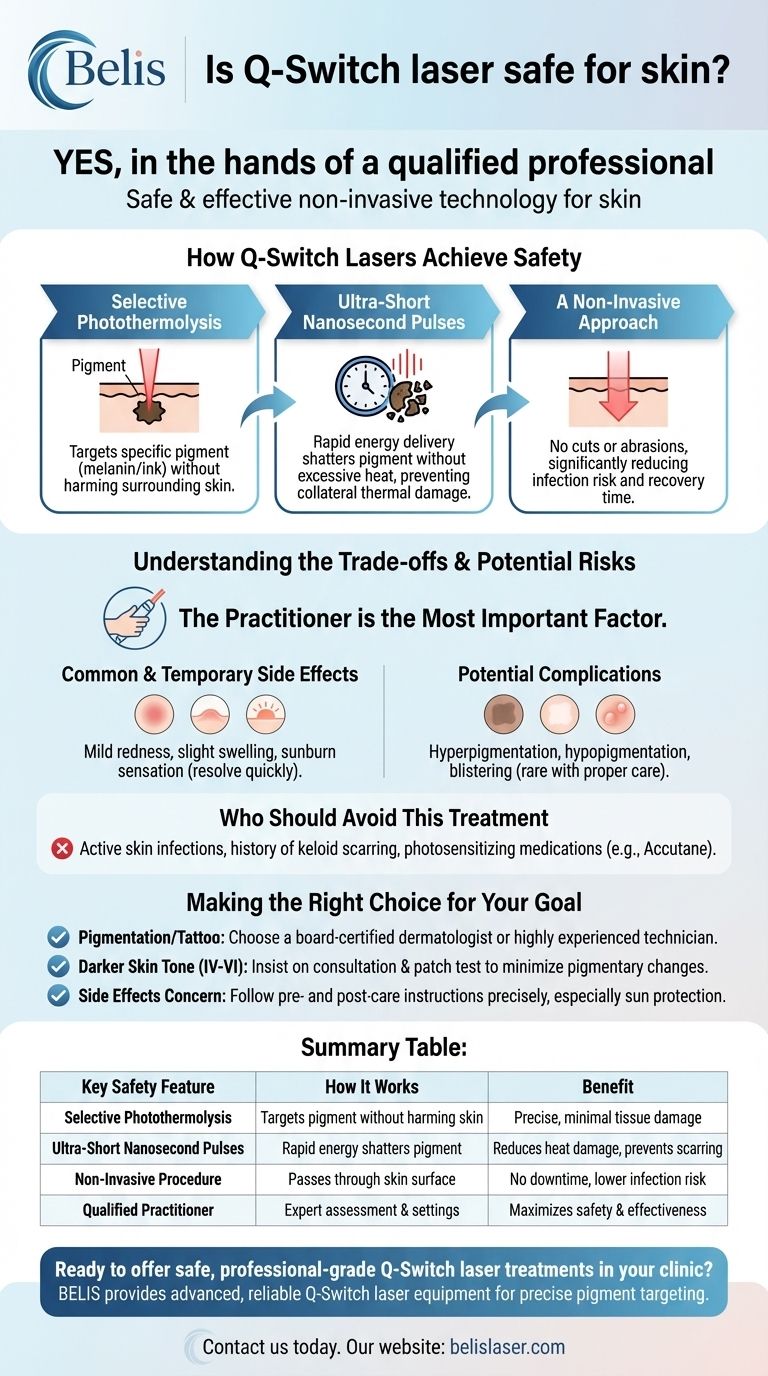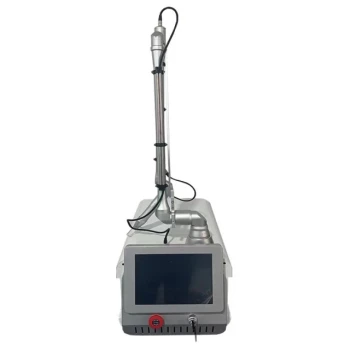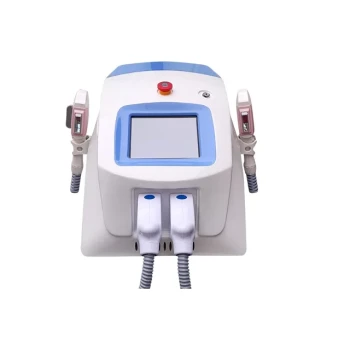Yes, in the hands of a qualified professional, Q-Switch laser treatment is widely considered a safe and effective technology for the skin. It is a non-invasive procedure, meaning it works without breaking the skin's surface, which significantly reduces recovery time and the risk of complications compared to more aggressive treatments.
The safety of a Q-Switch laser procedure is not inherent in the machine alone; it is critically dependent on the skill of the operator, a proper assessment of your skin type, and your adherence to post-treatment care.

How Q-Switch Lasers Achieve Safety
The technology's safety record comes from its highly specific and controlled method of action. It targets pigment with remarkable precision while minimizing damage to the surrounding healthy tissue.
The Principle of Selective Photothermolysis
Q-Switch lasers operate on a principle called selective photothermolysis. This means the laser's specific wavelength of light is strongly absorbed by the target pigment (like melanin in a sunspot or ink in a tattoo) but not by the surrounding skin.
This targeted absorption concentrates the laser's energy precisely where it's needed, leaving adjacent skin cells unharmed.
Ultra-Short Pulses Minimize Heat Damage
The defining feature of a Q-Switch laser is its incredibly short pulse duration, measured in nanoseconds. This isn't just fast; it's a critical safety feature.
The energy is delivered so rapidly that it creates a photoacoustic shockwave, which shatters the pigment particles without generating excessive heat. This prevents the collateral thermal damage (burns) that can lead to scarring and other complications.
A Non-Invasive Approach
Because the laser energy passes harmlessly through the outer layer of skin to reach the pigment below, the procedure is non-invasive.
There are no cuts or abrasions to the skin's surface. This dramatically reduces the risk of infection and means there is typically minimal to no downtime required after a session.
Understanding the Trade-offs and Potential Risks
While the technology is fundamentally sound, no medical procedure is entirely without risk. Understanding the potential side effects and contraindications is essential for making an informed decision.
The Practitioner is the Most Important Factor
The single greatest variable in the safety of a laser treatment is the experience and knowledge of the person operating it. An unskilled operator can use incorrect settings for your skin type, leading to adverse effects.
Common and Temporary Side Effects
It is normal to experience some mild, temporary side effects immediately following treatment. These are signs that the treatment is working and typically resolve within a few hours to a few days.
Common effects include mild redness, slight swelling (edema), and a feeling similar to a sunburn.
Potential Complications
Though uncommon, more significant side effects can occur, especially if post-care instructions are not followed or the treatment is administered improperly.
These include hyperpigmentation (a temporary or lasting darkening of the skin) and hypopigmentation (a lightening of the skin). Blistering is rare but possible, particularly in tattoo removal.
Who Should Avoid This Treatment
Q-Switch lasers are not suitable for everyone. A thorough consultation is necessary to screen for contraindications, which may include active skin infections, a history of keloid scarring, or the use of photosensitizing medications like Accutane.
Making the Right Choice for Your Goal
Your path to a safe and successful outcome is paved with careful research and realistic expectations. The key is to shift your focus from the technology itself to the professional who will be using it.
- If your primary focus is treating pigmentation or a tattoo safely: Your top priority must be selecting a board-certified dermatologist or a highly experienced, licensed laser technician.
- If you have a darker skin tone (Fitzpatrick IV-VI): It is non-negotiable to insist on a consultation and a patch test to minimize the risk of pigmentary changes.
- If you are concerned about side effects: Commit to following all pre- and post-care instructions precisely, especially diligent sun protection.
Ultimately, the Q-Switch laser is a powerful and precise tool that, when wielded by an expert, provides a safe solution for a variety of skin concerns.
Summary Table:
| Key Safety Feature | How It Works | Benefit |
|---|---|---|
| Selective Photothermolysis | Targets pigment (melanin/ink) without harming surrounding skin | Precise treatment, minimal tissue damage |
| Ultra-Short Nanosecond Pulses | Delivers energy rapidly to shatter pigment particles | Reduces heat damage, prevents scarring |
| Non-Invasive Procedure | Laser passes through skin surface without cuts or abrasions | No downtime, lower risk of infection |
| Qualified Practitioner | Expert assessment of skin type and correct settings | Maximizes safety and effectiveness |
Ready to offer safe, professional-grade Q-Switch laser treatments in your clinic?
BELIS specializes in providing medical aesthetic clinics and premium beauty salons with advanced, reliable Q-Switch laser equipment. Our technology ensures precise pigment targeting and operator-friendly features, empowering you to deliver outstanding results with confidence.
Contact us today to learn how our professional solutions can enhance your service offerings and client satisfaction.
Visual Guide

Related Products
- Q Switch Nd Yag Laser Machine Tattoo Removal Nd Yag Machine
- Clinic Use IPL and SHR Hair Removal Machine with Nd Yag Laser Tattoo Removal
- Pico Picosecond Laser Machine for Tattoo Removal Picosure Pico Laser
- Diode Laser SHR Trilaser Hair Removal Machine for Clinic Use
- Trilaser Diode Hair Removal Machine for Beauty Clinic Use
People Also Ask
- Is Q Switched Nd:YAG laser good? The Gold Standard for Tattoo & Pigment Removal
- What are the side effects of Q-switch laser? A Guide to Safe, Effective Treatment
- What are Q-switched lasers commonly used for? Remove Tattoos & Pigment with Precision
- What are the disadvantages of Q switching? Trade-offs in Pulse Control, Cost, and Beam Quality
- How does the Nd:YAG laser work? Unlocking Deep-Tissue Precision for Medical Aesthetics



















